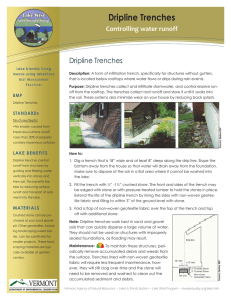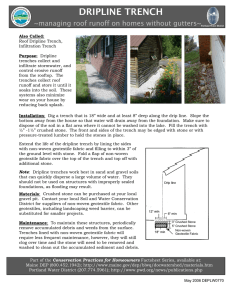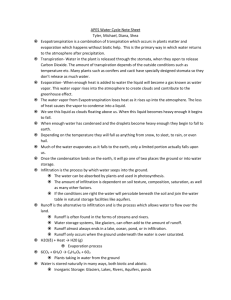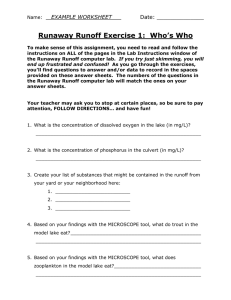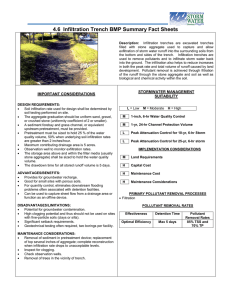Infiltration Trenches Controlling water runoff
advertisement
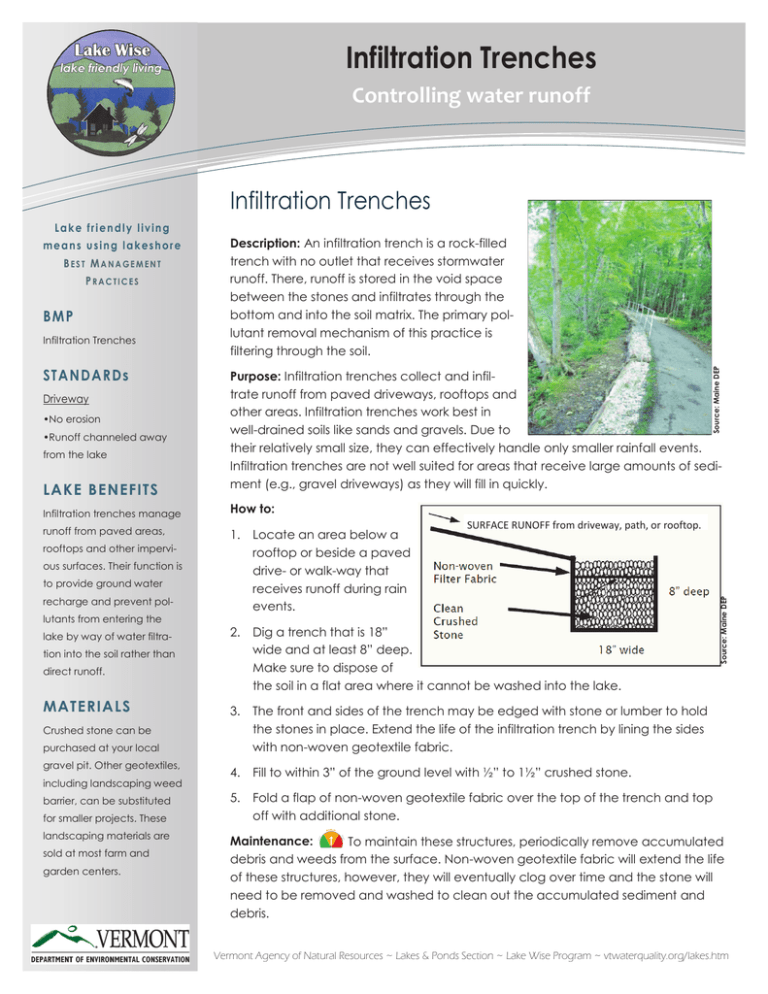
Infiltration Trenches Controlling water runoff Infiltration Trenches Lake friendly living PRACTICES BMP Infiltration Trenches STANDARDs Driveway •No erosion •Runoff channeled away from the lake LAKE BENEFITS Source: Maine DEP BEST MANAGEMENT Description: An infiltration trench is a rock-filled trench with no outlet that receives stormwater runoff. There, runoff is stored in the void space between the stones and infiltrates through the bottom and into the soil matrix. The primary pollutant removal mechanism of this practice is filtering through the soil. Purpose: Infiltration trenches collect and infiltrate runoff from paved driveways, rooftops and other areas. Infiltration trenches work best in well-drained soils like sands and gravels. Due to their relatively small size, they can effectively handle only smaller rainfall events. Infiltration trenches are not well suited for areas that receive large amounts of sediment (e.g., gravel driveways) as they will fill in quickly. Infiltration trenches manage How to: runoff from paved areas, 1. Locate an area below a rooftop or beside a paved drive- or walk-way that receives runoff during rain events. 2. Dig a trench that is 18” wide and at least 8” deep. Make sure to dispose of the soil in a flat area where it cannot be washed into the lake. 3. The front and sides of the trench may be edged with stone or lumber to hold the stones in place. Extend the life of the infiltration trench by lining the sides with non-woven geotextile fabric. 4. Fill to within 3” of the ground level with ½” to 1½” crushed stone. 5. Fold a flap of non-woven geotextile fabric over the top of the trench and top off with additional stone. rooftops and other impervious surfaces. Their function is to provide ground water recharge and prevent pollutants from entering the lake by way of water filtration into the soil rather than direct runoff. MATERIALS Crushed stone can be purchased at your local gravel pit. Other geotextiles, including landscaping weed barrier, can be substituted for smaller projects. These landscaping materials are sold at most farm and garden centers. SURFACE RUNOFF from driveway, path, or rooftop. Source: Maine DEP means using lakeshore Maintenance: To maintain these structures, periodically remove accumulated debris and weeds from the surface. Non-woven geotextile fabric will extend the life of these structures, however, they will eventually clog over time and the stone will need to be removed and washed to clean out the accumulated sediment and debris. Vermont Agency of Natural Resources ~ Lakes & Ponds Section ~ Lake Wise Program ~ vtwaterquality.org/lakes.htm

